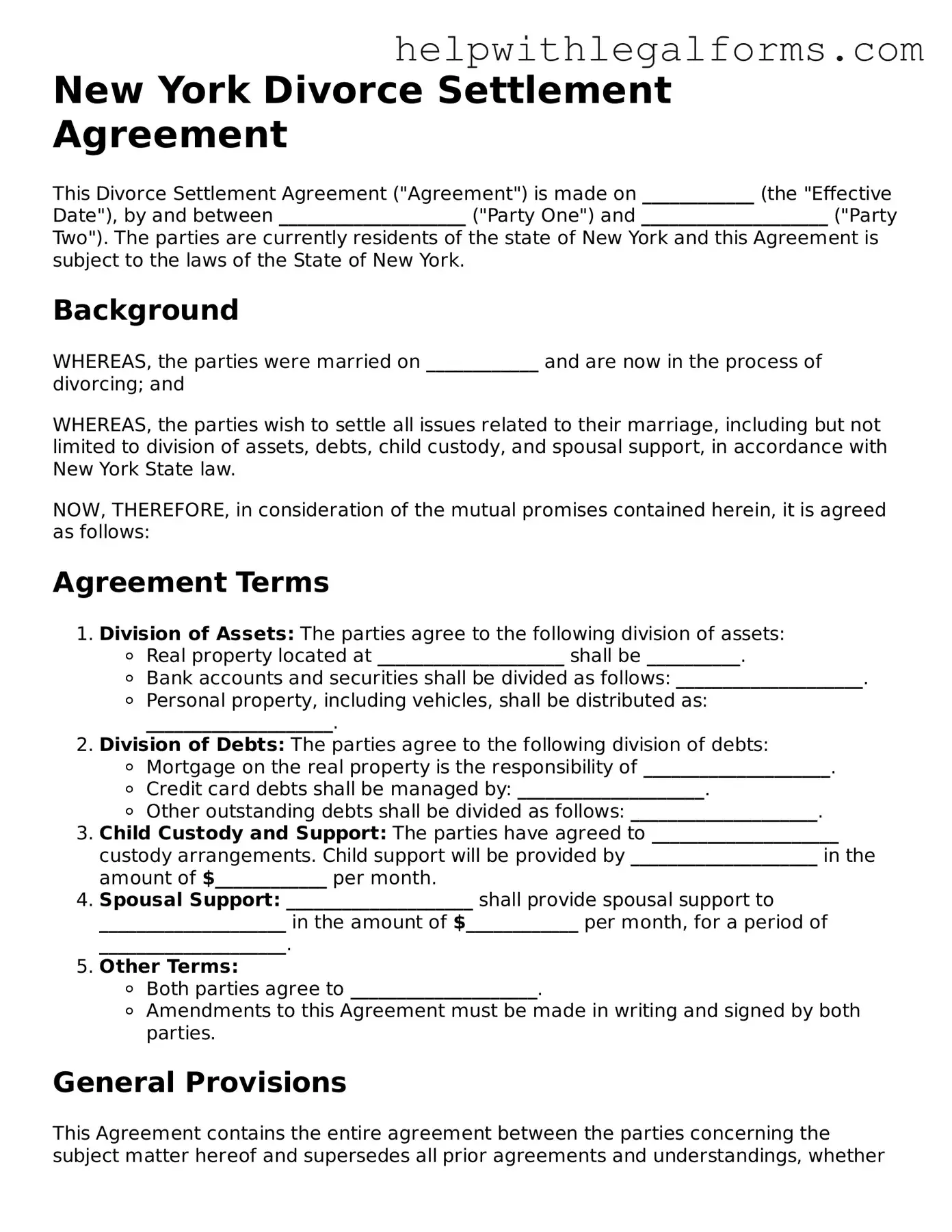What is a Divorce Settlement Agreement in New York?
A Divorce Settlement Agreement in New York is a legally binding document that outlines how a divorcing couple has agreed to divide their assets, debts, and responsibilities regarding children, if any. It covers key areas such as alimony, child support, custody arrangements, and the division of property and finances.
Do both parties need a lawyer to create a Divorce Settlement Agreement in New York?
While it's not required for both parties to have separate lawyers to create a Divorce Settlement Agreement in New York, it is highly recommended. Legal representation can help ensure that the agreement is fair, accurately represents both parties' interests, and complies with New York state law.
How is property divided in a New York Divorce Settlement Agreement?
In New York, property acquired during marriage is considered marital property and is subject to equitable distribution. This means that the division is meant to be fair but not necessarily equal. Factors such as the duration of the marriage, each spouse's financial situation, and contributions to marital property are taken into account.
Can a Divorce Settlement Agreement in New York include child custody arrangements?
Yes, a Divorce Settlement Agreement in New York can and should include child custody arrangements if the couple has children. These arrangements detail both physical and legal custody, outlining where the children will live and how decisions about their welfare will be made.
Is a Divorce Settlement Agreement in New York modifiable after it's been signed?
After it has been signed, a Divorce Settlement Agreement in New York can be modified, but only under certain conditions. Modifications are usually considered if there has been a significant change in circumstances. Both parties must agree to any changes, or a court must approve them.
What happens if one party does not adhere to the terms of the Agreement?
If one party fails to comply with the terms of the Divorce Settlement Agreement in New York, the other party can take legal action to enforce the agreement. This might include filing a motion with the court. The court has the power to enforce the agreement and ensure compliance.
How does alimony work in a New York Divorce Settlement Agreement?
In a New York Divorce Settlement Agreement, alimony, also known as spousal support, is money that one spouse pays to the other for financial support during or after a divorce. The amount and duration of alimony are determined by factors such as the length of the marriage, each spouse's income, and their future earning potential.
Can a Divorce Settlement Agreement in New York be made without going to court?
Yes, a Divorce Settlement Agreement in New York can be created and finalized without going to court, as long as both parties agree on all terms. However, the agreement must still be submitted to a court for approval to ensure that it complies with state laws and adequately protects the rights of both parties.
